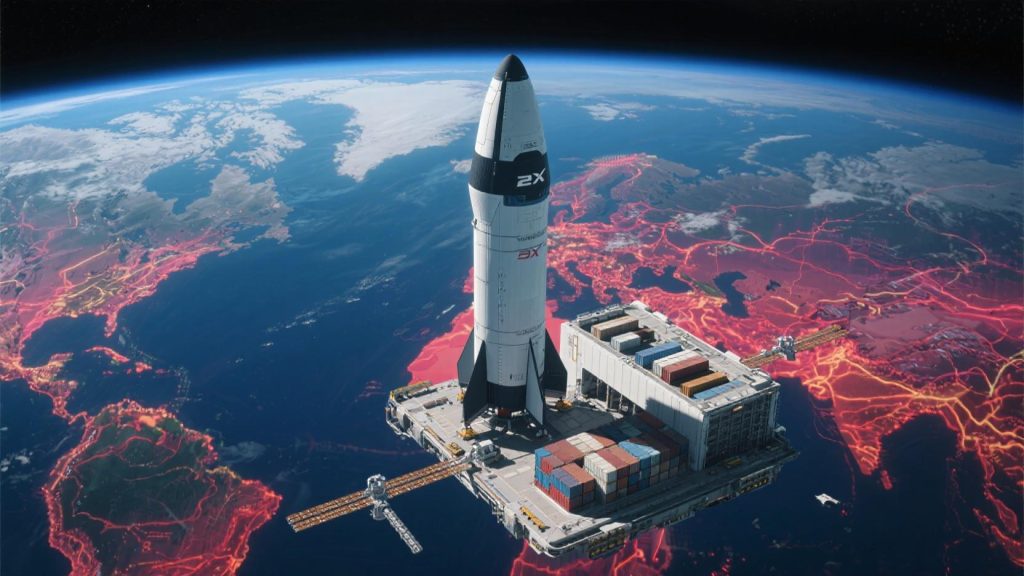
Suggested Image: SpaceX Starship docking with an orbital warehouse, Earth’s curved horizon below showing international shipping lanes as a heatmap.
In 2025, global logistics took a dramatic leap skyward. Amazon’s Project Kuiper launched the world’s first orbital sorting center, a floating warehouse in low Earth orbit (LEO) at 500 km altitude. Powered by solar arrays and coordinated by AI, the facility receives cargo via SpaceX Starship and redistributes it back to Earth via inflatable re-entry capsules. These precision-guided vessels use plasma braking technology, generating a controllable ion sheath around the capsule to fine-tune its trajectory—delivering packages within a 50-meter landing accuracy.
With this system, Los Angeles to Shanghai logistics times have been slashed from 10 hours to 90 minutes. But the true disruption is not speed—it’s sovereignty.

The New Geography of Trade
Traditional supply chains snake through chokepoints: ports, customs zones, shipping lanes—all subject to geopolitical friction. By storing high-value goods like semiconductor wafers or vaccine precursors in orbital depots, corporations are decoupling from terrestrial borders. A product stored above the atmosphere is outside any nation’s jurisdiction—a trade asset immune to tariffs, embargos, or blockades.
This shift marks the emergence of a “sky-neutral zone”, akin to early maritime law. Countries are racing to write orbital trade regulations, but the infrastructure is already ahead of the paperwork. SpaceX and Blue Origin are testing cargo-only Starship flights, while Chinese firm iSpace is developing returnable capsules tailored for rare earth shipments.
Plasma Brakes and AI Dispatch
The linchpin of this system is plasma drag steering. As a capsule re-enters the atmosphere, its surface ionizes. By dynamically manipulating this ion layer using embedded electromagnets, descent angles and final landing zones can be steered in real time. Combined with ground-based predictive AI, this allows orbital warehouses to act like global vending machines: select a drop point, and delivery begins at Mach 25.
Each re-entry capsule carries minimal payload—usually 20–50 kg—optimizing for frequency over volume. This favors just-in-time manufacturing, especially for critical components where every hour of delay equates to millions in losses.
Beyond Earth-Centric Thinking
But the implications extend further. If orbital storage becomes standard for strategic goods, Earth-bound supply chains could be bypassed entirely. This opens the door to cis-lunar logistics, where the Moon becomes not a destination but a node. Lunar resources—metals, fuel, water—could be staged in orbit and delivered to any Earth site with precision capsules.
More provocatively, the demilitarization of orbital logistics will be a litmus test for global trust. Warehouses floating above national borders will force nations to redefine economic sovereignty and intellectual property protection in a post-territorial age.






